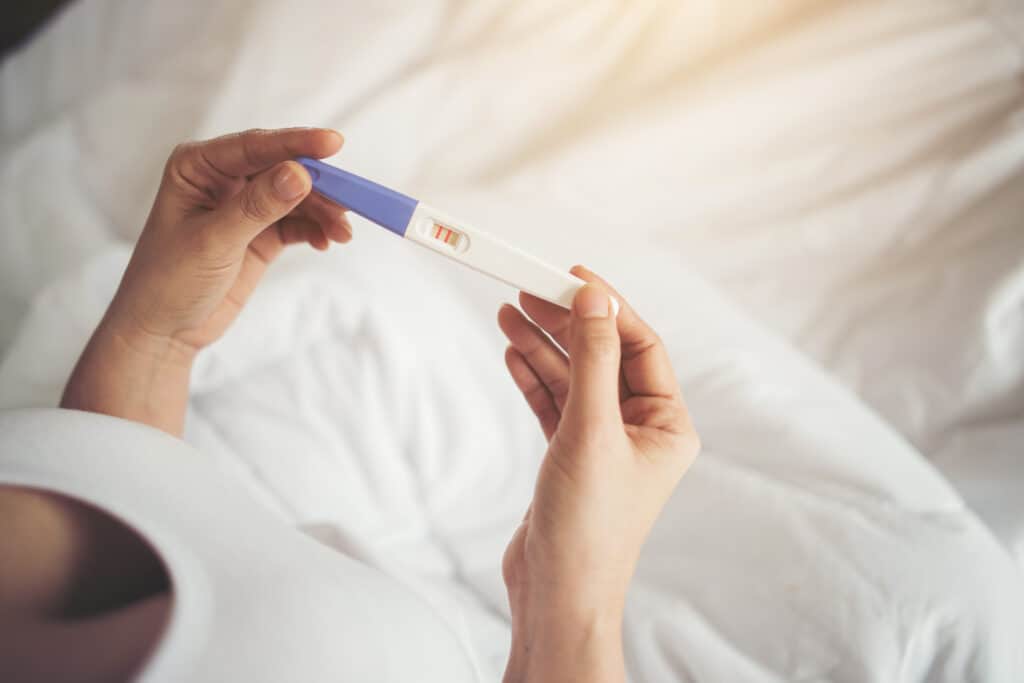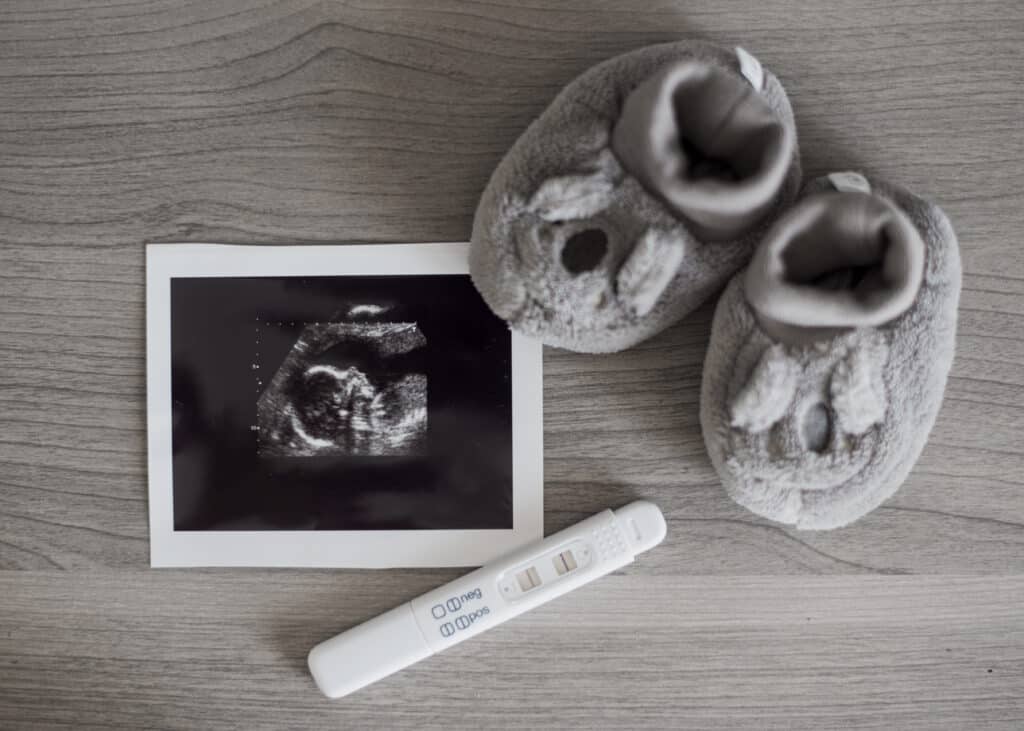Wrong pregnancy test outcomes do happen, and sometimes that’s due to user error, test inaccuracy, or the biological processes in the body. We will discuss all possible reasons for false-negative home pregnancy tests below. It is worth noting that these tests are much simpler than false positives in terms of body complications.
But be that as it may, getting a false negative pregnancy test is likewise irritating and can be heartbreaking or provide you with false hope, depending on the results you were hoping for.
If you do a test and the pregnancy test result was negative, that means you’re not pregnant. However, if you think you’re pregnant and you redo the whole thing and the pregnancy test is negative again, there may be a few reasons behind the entire scenario.
We have gathered the most common situations that affect the pregnancy test results. Some are health-related, and some due to common errors. We hope these will answer all your pregnancy questions.
How Do Home Pregnancy Tests Work?
Home pregnancy tests measure a particular hormone in the urine called human chorionic gonadotropin (hCG), which is only present when women are pregnant. This is part of the pregnancy hormones that nurture and help the fertilized egg embed in the womb and grow.
Although blood tests are the most accurate in detecting the hCG levels at any part of the cycle, women prefer getting a home pregnancy test because of its convenience.
Explanations Behind a False-Negative Pregnancy Test
Now that we went through the basics of a home pregnancy test let’s talk about why you might get a negative pregnancy test result even if you are pregnant.
You see, there is an array of pregnancy tests out there, and choosing the best may feel like a lottery. Some pregnancy tests are more accurate than others because they are made more sensitive to the hCG hormone. And although some claim to be able to detect pregnancy 6 days before your missed period, the best time for testing in your cycle is the first day of your missed period.
At this time, any home pregnancy test will result in about 99% accuracy.
Consequently, most brand kits recommend rehashing the test in a couple of days. Research shows that many women get faulty results 9 days after their last missed period.
If you get a negative pregnancy test but have all the signs of pregnancy, the disappointment of that negative result can be compounded. Your first instinct may be to question whether the test may have somehow gotten it wrong, especially if you feel pregnant. And in truth, false negatives do sometimes happen, although they are rare.
If you are in this situation and several tests gave you negative results, we recommend setting an appointment with your gynecologist. They can do more thorough pregnancy testing and see what is causing the missed periods.
With that said, here are all the reasons a home pregnancy test may give inaccurate results.
You Are Not Pregnant
To get to the bottom of the possible reasons for the negative outcome of the result, you have to clear the most obvious reason first. You may not be pregnant in the first place. Many women tend to find this heartbreaking because they have been trying very hard to conceive that they tend to feel symptoms that aren’t there.
If you think you are pregnant and feel breast soreness and unexplained nausea, it is understandable that you may be confused by a negative result. Unfortunately, there are also other explanations for these feelings, some of which may require immediate medical care.
You Tested Too Early

Another reason why women may get a false negative while pregnant is testing too early. Most advanced home pregnancy tests have a high level of accuracy and are pretty sensitive to the hCG levels. However, this hormone will not be present in the urine immediately. The body starts to produce hCG soon after the fertilized egg implants in the uterus, but it usually takes around two to three weeks for levels to be high enough for accurate detection.
So, if you test too early in your cycle, you may be pregnant, but the test is not sensitive enough to pick up any signs of the hCG hormone.
The test’s sensitivity can vary in the early stage of pregnancy, and hCG levels tend to double every two days. This is why it is best to test on the first day of your missed period or ever a couple of days after to make sure that the hormone can be detected.
If you cannot wait and want to know whether you are pregnant or not right away, then a blood test will be more accurate at detecting the primary pregnancy hormone.
The Early Miscarriage
If you felt signs of pregnancy but saw only one line on your test, it is possible that you went through an early miscarriage without being aware of it. This is also known as a chemical pregnancy and is usually the reason for a false-positive test. However, if your body got rid of the hCG before you tested, then the information on the stick wasn’t wrong.
Such a condition occurs when there is a problem with the fertilized egg. You felt pregnant but had a negative test result because a chromosomal disorder made the pregnancy non-viable. So, when your system detected this, it spontaneously aborted the fetus. Data show that sometimes this happens even before a woman knows she is pregnant. Up until the abortion, pregnancy symptoms were advancing as usual, and the hormones were released into the system steadily.
Such an unfortunate occurrence is known to happen in 10% to 20% of all pregnancies. However, it is believed that this percentage is closer to 50% of the cases because, in some women, it goes undetected. However, this should not worry you. Miscarriages for most women are a one-off event, and most of the majority can achieve and maintain a healthy pregnancy later on.
The same may happen when the conception of the egg occurs in the fallopian tubes due to the ovulation process. The pregnancy hormone will be released, and you will be feeling the common signs, but the pregnancy will not be viable.
Research still hasn’t found a definitive cause for this, but it is crucial to seek immediate care for the sake of your health and the health of your future baby.
The Tests Failed
Although most of this information states that the cause for a false-negative test may be due to specific processes in the body or user error, the testing device’s problem isn’t excluded.
In this case, there is nothing else to be done but to buy more tests and redo the process once more. By testing a few times, you reduce the risk factor of getting a false negative or a false positive on your test.
Before you retest, check for these common mistakes:
- Did you leave the dipstick in the urine stream for the recommended time?
- Did you check the expiry date of the test?
- Did you use a test that was exposed to excessive heat or sunlight?
The High-Dose Hook Effect
Another possible cause of the false negative may lay in the huge content of hCG. Although that may sound counterintuitive to what we said about pregnancy tests so far, it still is possible.
In such rare instances, a woman may have twins or multiple pregnancies, in which the content of hCG is very high. This surpasses the level of tolerance of the test and causes it to show a negative result.
It can also occur when you take fertility drugs to aid with the conception or have missed taking your birth control pills.
So, if you have missed your period and feel pregnant but the pregnancy tests keep giving you negative results, it is time to see your doctor and do a blood test.
Testing at the Wrong Time of Day
Be mindful that the timing of the urine specimen can have some impact. The way to get the most accurate results is to test first thing in the morning. Use your FMU or the first-morning urine, as some call it, to test.
At this time of day, the hCG is the most concentrated and easily detectable.
The Urine Is Too Diluted
Don’t drink heaps of water or different fluids in a couple of hours before testing. Doing this will weaken your urine and dilute the hCG, which may cause a false negative. So, before using your test, do not drink anything to get more accurate results.
Faulty Technique Used
Most tests are pretty straightforward to use, but you still need to follow some specific instructions to get accurate results. If you are unsure of this, do some research. Visit the site of your test provider directly and check for their directions for the device.
This way, you are sure that there is no problem with how you are using the test.
Additionally, you may get an extremely faint thin line on your pregnancy test, which might be hard to translate. Sometimes women think this is just an evaporation line, so they consider the test negative when in reality, the test shows a positive result.
Lastly, the tests require a certain measure of urine to give the most exact result. There was insufficient urine present to conduct the test on the off chance, or you didn’t hold the test strip long enough in the narrow stream.
How to Approach a Negative Result?

If you keep on getting a false negative pregnancy test when you are sure you are pregnant, the first thing you should do is check with your health care provider for a blood test.
Your doctor will best detect what is causing this on-site and if there is any concern for your health. They will check your hormone levels, which ought to help clear up the confusion and check your ovulation process to see if everything is in order.

